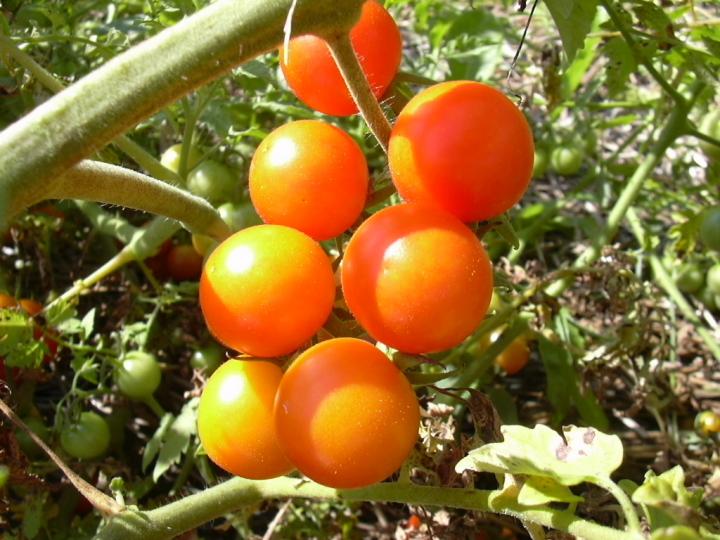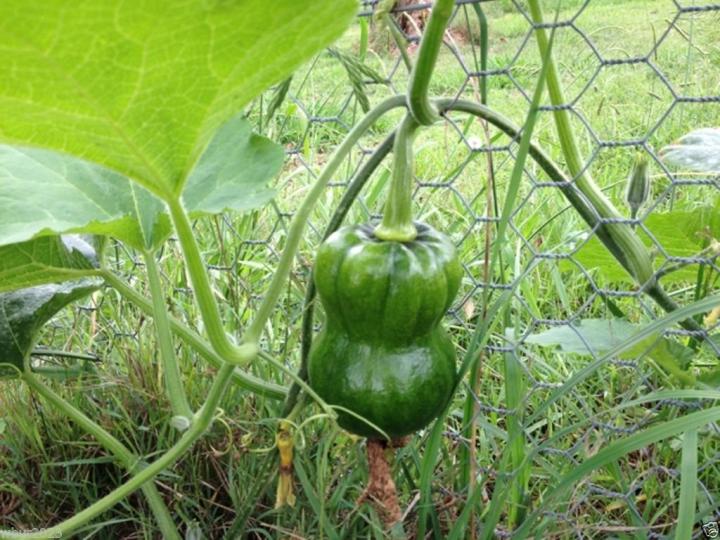10 Unusual Plant Names and Plant Lore
For daily wit & wisdom, sign up for the Almanac newsletter.
Become a better gardener! Discover our new Almanac Garden Planner features for 2024. It’s easy, fun, and free to try!
Who doesn't love a good story? I am drawn to plants that have an interesting story attached to them. I love plant lore, and learning about a plant's origins and how it got its plant name. I hope you do, too!
Here are few of my favorite stories behind some heirloom plants.
- 'Mostoller Wild Goose' is a pole variety of horticultural bean named for Sarah Mostoller, a miller's wife from western PA who found the beans in the crop of a goose her son had shot. Apparently she thought that what's good for the goose is also good for the gardener. She is not the only one to come upon a tasty variety of bean this way.
- 'Turkey Craw' bean is a climbing snap bean with a similar story. The seeds were found in the gullet of a wild turkey brought home by a hunter and planted by his resourceful wife. They can be eaten green or dried.

- 'Howling Mob' corn is a turn-of-the-century variety that was named by the breeder after a trip to market when his wagon was surrounded by frenzied customers who arrived after he had sold out for the day.
- 'Lazy Housewife' was one of the first stringless pole beans, making the cook's job that much easier when she didn't have to pull the string from each pod. It was brought to America by German immigrants.
- 'Myona' tomato got its name when an Italian immigrant in New York City was asked where he got the seeds for the especially flavorful paste tomatoes that he was selling from a pushcart. He replied, "My own," because they were seeds he had brought with him from Italy. Due to his accent it sounded like "myowna" and the name stuck.
- 'Peacevine' tomato is a variety of cherry tomato that got its name from the high amounts of gamma amino butyric acid (GABA) it contains. GABA is a substance which acts as a calming sedative.

- 'Dr. Wyche's Yellow' (pictured at the top) is an yellow heirloom tomato grown by Dr. John Wyche who once owned Cole Brother's Circus. His garden was well-fertilized, as you can imagine, with elephant manure! The tomatoes are known for their orange-yellow color and sweet flavor, which develop whether you use elephant manure or not.
- 'Shishigatani' pumpkins are Japanese heirlooms from the early 1800's. Ribbed and warty, they are shaped more like a bottle gourd than a pumpkin, but have a delicious nutty flavor. A traditional vegetable in Kyoto cuisine, it was once thought that eating this during the hottest part of the summer would ward off polio!

- 'Ha Ogen' melon is named for an Israeli kibbutz and means "the anchor" in Hebrew. It is thought to have arrived in Israel from Hungary, where it was eaten, sprinkled with paprika, for dessert. My favorite story is of the 17th century Hungarian noblewoman who loved melons so much that when frost threatened she covered them with her fur coat. Unfortunately, thieves stole the coat and the melons froze!
- 'Radiator Charlie's Mortgage Lifter' tomato has the best story of all. During the Depression, Marshall Cletis Byles of Logan WV became known as Radiator Charlie because he cleverly situated his auto repair shop at the bottom of a steep hill where trucks regularly overheated. Even though he had grown up working in the cotton fields of NC he maintained an interest in gardening. To grow the biggest and best tasting tomato he experimented with cross-pollinating 4 varieties. Over six years he selected the best plants and crossed them again until he finally ended up with a disease resistant, heavy bearing tomato plant that produced fruits weighing up to 4 lbs. each. Word spread about these fabulous plants and they became known as 'Radiator Charlie's' tomatoes. He sold the plants for $1 each, a whopping amount to pay for a plant at that time. Gardeners came from as far as 200 miles away to buy them. He sold 1,000 plants a year over the next 6 years and was able to pay off the mortgage on his house. After that the named changed to 'Radiator Charlie's Mortgage Lifter'. We grow these tomatoes every year, as much for the story as for the tomatoes.
I am pretty sure that seeds all of these plants are still available if you want to add a good story to your garden.

